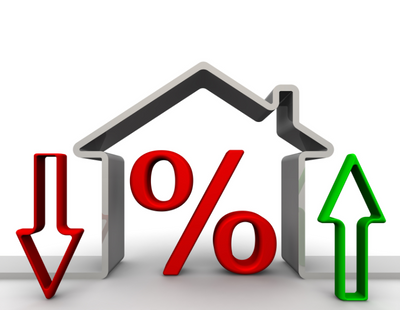
Overvaluations are making properties taking longer to go under offer but sales are at least finally completing faster, research suggests.
Analysis by data firm TwentyEA found it is now taking longer to get a sale agreed throughout every UK region, with the East Midlands experiencing the largest percentage increase in time to sell.
In this area, the time between a listing going live and reaching sold subject to contract (SSTC) rose to 77 days from 54 days last year - an uplift of 43%.
Inner London saw the smallest percentage increase of 12% from 77 days in 2023 to 86 days this year.
This indicates sellers across the country are still overly optimistic on price, especially given the number of price changes peaked in July, TwentyEA said. These rose to just under 94,000 last month - the highest number recorded between the period January 2019 and July 2024.
At the same time, the number of days to get to completion from SSTC has marginally reduced in each region, with the North East seeing the time it takes to complete reduce to 111 days this year from 121 in 2023 - a reduction of 8%.
Katy Billany, executive director of TwentyEA, said: “Despite a strong rise in demand which began at the beginning of 2024, it’s now taking longer to find a buyer than this time last year.
“This suggests many sellers are still overly optimistic on price and we’re seeing further indications of this from the high number of price changes. Last month, these peaked at 93,968 - the highest monthly figure seen at any time between January 2019 to date.
“Overall, the property market is looking buoyant with the number of agreed sales 16% higher so far this year compared to 2023. New instructions are also up 10% and it’s very pleasing to see that the time to complete from SSTC has fallen marginally over the last year. We can see this reduction across each region and while there will be many nuances at play, one likely reason behind this is a more stable mortgage landscape.”
|
Region
|
New Instruction to SSTC (days)
|
SSTC to completion (days)
|
|
2024
|
2023
|
% difference
|
2024
|
2023
|
% difference
|
|
Inner London
|
86
|
77
|
12%
|
121
|
126
|
-4%
|
|
Outer London
|
66
|
58
|
14%
|
127
|
129
|
-2%
|
|
South East
|
66
|
56
|
18%
|
126
|
128
|
-2%
|
|
South West
|
63
|
52
|
21%
|
123
|
126
|
-2%
|
|
East Midlands
|
77
|
54
|
43%
|
115
|
124
|
-7%
|
|
West Midlands
|
71
|
52
|
37%
|
119
|
127
|
-6%
|
|
East of England
|
74
|
55
|
35%
|
122
|
131
|
-7%
|
|
Yorkshire & Humber
|
71
|
52
|
37%
|
113
|
120
|
-6%
|
|
Wales
|
82
|
59
|
39%
|
112
|
119
|
-6%
|
|
Scotland
|
48
|
41
|
17%
|
80
|
82
|
-2%
|
|
North West
|
71
|
54
|
31%
|
117
|
124
|
-6%
|
|
North East
|
64
|
52
|
23%
|
111
|
121
|
-8%
|
|
Average
|
72
|
55
|
31%
|
114
|
122
|
-7%
|
















.png)


.png)




Join the conversation
Be the first to comment (please use the comment box below)
Please login to comment